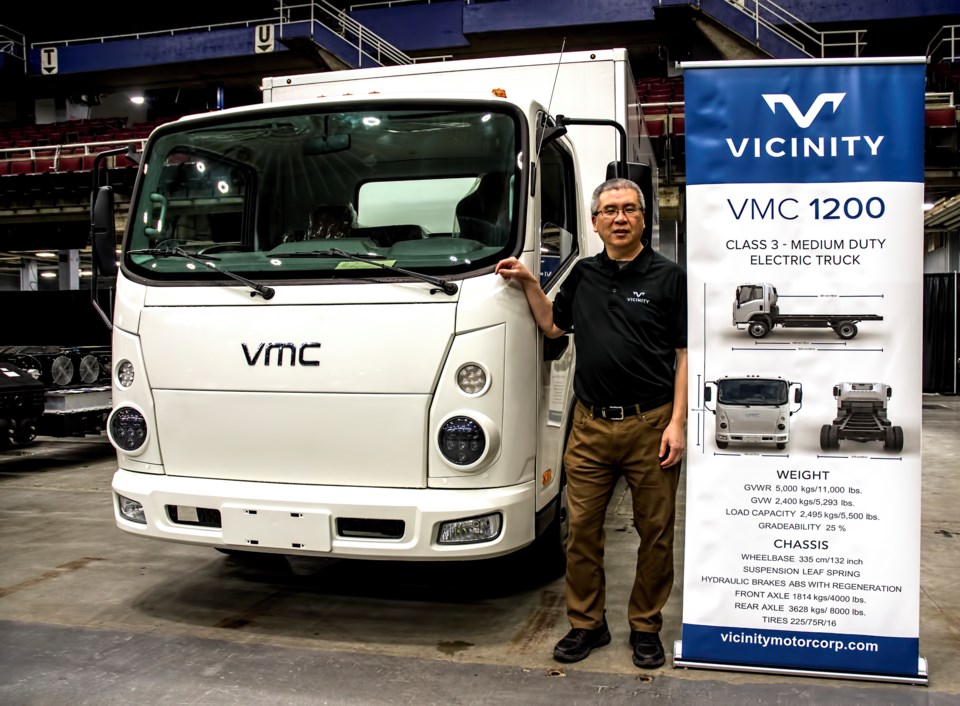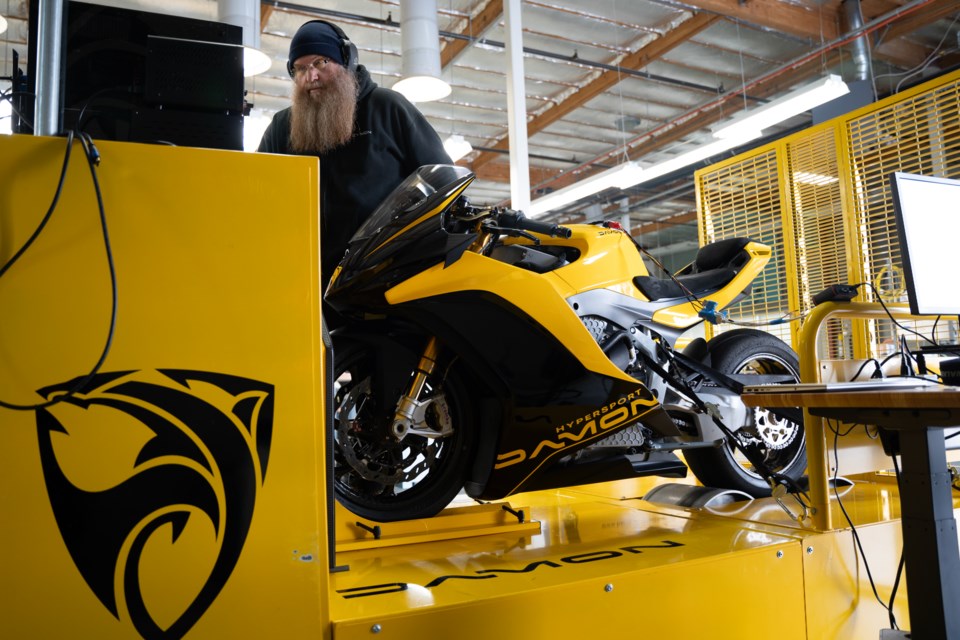With an eye to capitalizing on growing electric vehicle and battery markets, the federal government has committed more than $30 billion in subsidies to convince companies like Honda Motor Co. (NYSE:HMC), Stellantis NV (NYSE: STLA) and Volkswagen to locate new EV and battery manufacturing plants in Ontario and Quebec.
Little of that federal largesse has flowed to B.C., which admittedly has never had—and likely never will have—the kind of auto manufacturing ecosystem that exists in Canada’s two largest provinces.
Even so, B.C.’s small, nascent EV manufacturing sector has had some success in serving niche markets, such as electric buses and motorcycles. But most of the manufacturing and assembly of these products is done in the U.S.—currently the world’s biggest market for these kinds of vehicles.
In a 2022 report, Clean Energy Canada estimated that the EV and battery manufacturing industries could create 250,000 jobs in Canada, and that the country could potentially attract investment for two battery gigafactories sometime before 2030.
That was when just one gigafactory—the Stellantis NV and LG Energy Solution joint venture in Windsor, Ontario—had been announced. The federal and Ontario governments committed $15 billion in subsidies for the project.
“If you just fast-forward one year after that report was out, we already blew past our moonshot scenario,” said Clean Energy Canada public affairs director Joanna Kyriazis. “We have landed not one, but two additional gigafactories. We have come an incredibly long way from just two years ago, where Canada’s punching way above its weight.”
Some have questioned the economics of placing such huge bets on a single industry, however. Parliamentary Budget Officer Yves Giroux estimates that $46 billion worth of investments will be made in Canada’s EV supply chain, mainly in EV assembly and battery manufacturing.
The Canadian government has offered $31 billion in production subsidies and investment tax credits, and Ontario and Quebec have offered an additional $21 billion. The Giroux’s office estimates it will take 20 years for the federal government to break even on its investments in the Stellantis-LGES and Volkswagen EV battery plants.
“If you look at most of the government-funded initiatives like this over the last 25 or 30 years, at the very best they’ve come to a point of zero, and in most cases they’ve never recovered their investment,” said Brent Perry, the Vancouver business leader who founded two marine battery companies—Corvus Energy and Shift Clean Energy—and who now heads Net Zero Renewable Solutions.
B.C.’s EV and battery manufacturing sector is nowhere near the scale Eastern Canada’s, where auto-related manufacturing developed adjacent to Detroit.
“British Columbia is a bit of a logistical nightmare for manufacturing,” Perry said. “Having the Port of Vancouver is great, but the supply chain for almost all the major components are very remote to British Columbia.”
B.C. also doesn’t have the manufacturing talent of its eastern counterparts.
“There aren’t that many people who are highly skilled in logistics and supply chain, and factory management and production planning, out here,” said Perry, adding that there is a greater number of people with those skills in Quebec, Ontario and Manitoba. “There just isn’t real focus at the government level here to support that kind of mass initiative.”
B.C. was home to an electric three-wheeled mini car called the Solo and made by ElectraMeccanica, which was acquired by U.S.-based Xos (Nasdaq:XOS) in March. Two electric bus and truck makers and one electric motorcycle startup are also headquartered in B.C.
Vancouver’s Damon Motors, which is in pre-production for the electric motorcycles that it designed, is poised to go public soon on the Nasdaq through a reverse merger with a subsidiary of Inpixon (NASDAQ:INPX).
While Damon designed the electronics for its electric motorcycles, the company doesn’t do any manufacturing per se. It will be assembling its motorcycles in a plant in California from components sourced from a variety of original equipment manufacturers (OEMs).
Damon set up its assembly plant in California in part because of land costs and labour availability, said founder and CEO Jay Giraud. Twenty-five per cent of the U.S. motorcycle market is in California, he said. The state is also home to talent.
“The heart of EV talent is still in California,” he told BIV. “There’s quite a few disciplines that you need from an engineering standpoint to design and build an electric vehicle, and the greatest breadth and depth of that is California.”
At some point, he said he would like to see some manufacturing and assembling done in Vancouver or elsewhere in Canada. He noted there is a 25-per-cent trade tariff to ship electric motorcycles to Europe from the U.S.
“When we’re ready to expand, we may need to do final assembly in Canada to avoid that tariff,” he said.
In addition to electric motorcycles, B.C. companies have specialized in electric bus and truck design.
Vancouver’s GreenPower Motor Company (TSX-V:GPV, Nasdaq:GP) is an OEM in the electric school bus and class 4 truck space, and Vicinity Motor Corp. (TSX-V:VMC, Nasdaq:VEV) in Aldergrove makes electric public transit and shuttle buses, as well as class 3 trucks.
Vicinity does some of its manufacturing and assembly in B.C. at its 32,000-square-foot plant and headquarters in Aldergrove. It also has a manufacturing plant in Ferndale, Washington. Vicinity recently reported an order backlog of more than $125 million.

GreenPower has a manufacturing plant in West Virginia and an assembly plant in California. The company builds the cabin chassis—including the wheels, suspension, battery packs, traction motor and cab—for electric class 4 vehicles for other OEMs.
“In the past three or four years, we’ve sold over 300 to other OEMs that have built out their products on our cabin chassis,” said GreenPower CEO Fraser Atkinson.
The company does its manufacturing and assembly in the U.S. because that’s where the market is. Both California and New York have much stricter transportation electrification regulations than does Canada, Atkinson said.
California, for example, requires that, as of this year, 10 per cent of all new class 4 vehicles purchased by medium and large fleet operators must be zero emission, Atkinson said. And New York state is aiming to electrify all public school buses by 2035.
“There isn’t anything like that in Canada,” Atkinson said.
There are 50,000 school buses in New York and 30,000 in California, Atkinson said. The sticker price for the electric school buses made by GreenPower is US$325,000.
“Times 80,000, that’s a $25 billion market,” Atkinson said.
Like Giraud, Atkinson said he hopes to see his company eventually do some manufacturing and assembly in Canada as global demand catches up with demand in the U.S. Should GreenPower start manufacturing in Canada, Atkinson said the company might follow a model similar to what it follows in the U.S, with component manufacturing done in the east and assembly in the west.
“Final assembly makes a lot of sense for us in B.C.,” he said.
In an effort to protect American EV and battery manufacturers, U.S. President Joe Biden’s administration recently announced new tariffs on EVs and batteries from China, which will increase from the current 25 per cent to 100 per cent for EVs, and to 25 per cent from 7.5 per cent for lithium-ion batteries.
Canada will be under pressure to also implement tariffs against Chinese EVs and batteries.
“The Americans obviously have made their position clear,” Natural Resources Minister Jonathan Wilkinson told BIV. “They obviously would be very concerned, going forward, if Canada became a dumping ground, where cars were being brought into Canada [from China] and then shipped to the United States, which we need to be cognizant of.”
Though the tariffs are intended to protect North American EV and battery makers, Atkinson said he doesn’t think they are a good idea, as they will raise the cost of both EVs and batteries and thereby slow adoption.
“I think it’s bad for manufacturers,” Atkinson said. “I think it’s bad for consumers.”





